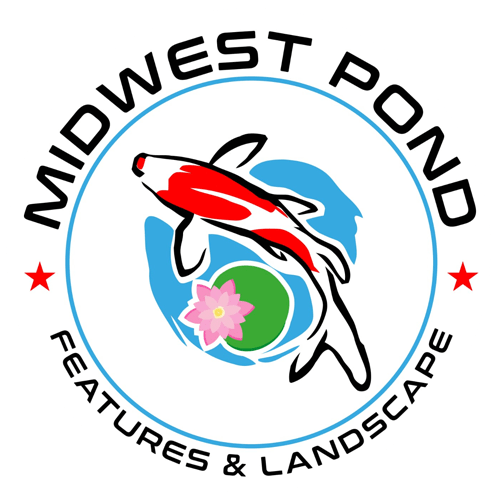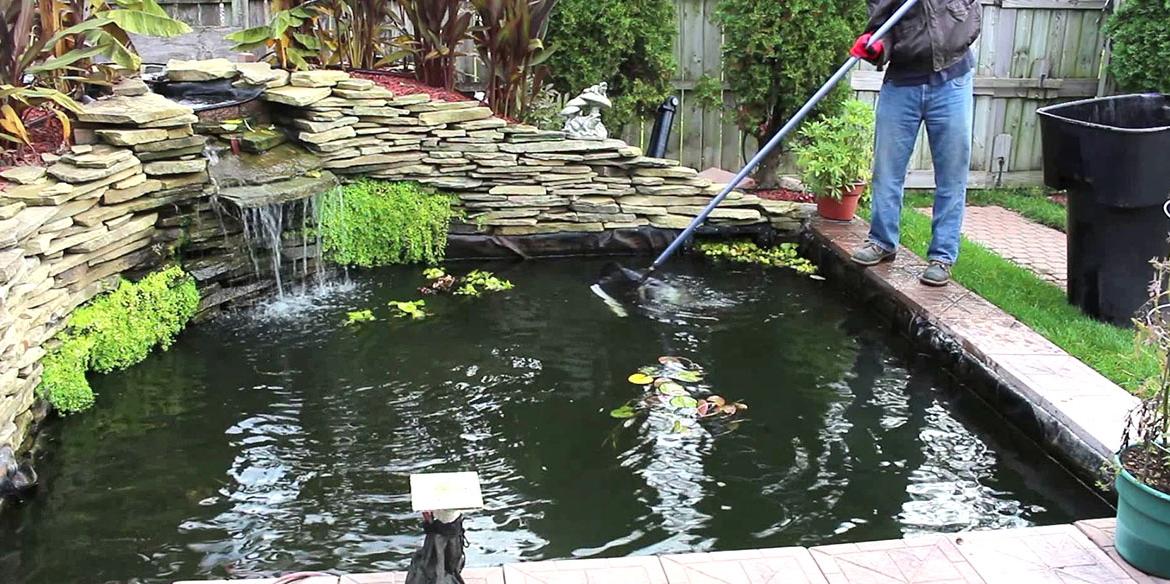Are you a farmer or landowner struggling to keep your farm pond clean and healthy? Do you wish to discover best practices for preventing nutrient pollution, controlling algae and weeds, and encouraging the development of advantageous microbes in your pond?
Look no further! In this blog, we will dive into the world of farm pond maintenance, exploring the various negative influences that can impact the health and cleanliness of your pond and providing practical solutions to help you keep your pond in top shape. We’ll cover everything from monitoring water quality to properly maintaining aeration systems. So, grab your waders, and let’s jump in!

Understanding the Causes of Pollution and Nutrient Sources in Farm Ponds
Farm ponds can become polluted and a source of nutrient pollution due to various reasons, including:
- Agricultural Runoff: It is one of the significant causes of pollution in farm ponds. The runoff from farms carries excess nutrients, such as nitrogen and phosphorus, and animal waste, which can cause an increase in algae and aquatic plant growth.
- Leaves and Grass Clippings: Decomposing leaves and grass clippings can cause an increase in organic matter in ponds, leading to the growth of fungus, bacteria, and algae.
- Animal waste: An increase in nutrients like nitrogen and phosphorus can result from animal manure, which can lead to an increase in aquatic plant growth, algae, and harmful bacteria.
- Lack of Vegetation Barriers: Without vegetation barriers, agricultural runoff can enter ponds and carry pollutants such as pesticides, herbicides, and fertilizers, leading to pollution.
Preventing Pollution and Nutrient Sources in Farm Ponds
Preventing pollution and nutrient sources in farm ponds is crucial to keep them healthy and clean. Here are some measures to avoid pollution and nutrient sources in farm ponds:
- Maintain Vegetation Barriers: Maintaining vegetation barriers such as grass buffer strips, riparian zones, and native vegetation can help prevent agricultural runoff from entering the ponds.
- Proper Disposal of Leaves and Grass Clippings: Properly disposing of leaves and grass clippings can prevent increased organic matter and reduce the growth of fungi, bacteria, and algae.
- Proper Disposal of Animal Waste: Proper disposal of animal waste can prevent the release of excess nutrients and harmful bacteria into the pond.
- Reduce the Use of Fertilizers and Pesticides: Reducing the use of fertilizers and pesticides can prevent the entry of these chemicals into the pond through agricultural runoff.

Cleaning a farm pond
There are several methods to clean a farm pond depending on the severity of the pollution and nutrient sources.
- Aeration: Aeration can increase oxygen levels in the pond, promoting the growth of beneficial bacteria that can break down organic matter and nutrients, leading to a clean and healthy pond.
- Dredging: Dredging involves removing the muck and sediment from the pond’s bottom, which can reduce nutrient levels and improve water quality.
- Barley Straw: Barley straw is a natural method of cleaning a pond by releasing humic acid, which can prevent algae growth and improve water quality.
- Vegetation Barriers: Vegetation barriers such as aquatic plants can absorb excess nutrients and prevent the entry of pollutants from agricultural runoff.
- Diffusion Aerator: A diffusion aerator can increase oxygen levels in the pond, promoting the growth of beneficial bacteria and improving water quality.
- Hydrogen Peroxide: Hydrogen peroxide can remove floating organic matter and reduce algae growth in the pond.
Learning Farm Pond Maintenance
Farm pond maintenance is crucial to keep the pond clean and healthy. Here are some tips for learning farm pond maintenance:
- Join Extension Programs: Extension programs can help you learn about farm pond maintenance and management. The extension programs offer training, workshops, and resources to help farmers manage their ponds effectively
. - Regular Monitoring: Monitoring the pond’s water quality, oxygen, and nutrient levels can help detect problems early and prevent severe pollution.
- Regular Maintenance: Regular upkeep may stop pollution and keep a pond healthy. Examples include clearing away waste, maintaining vegetation barriers, and managing surplus nutrient sources.
- Proper Management of Animal Waste: Proper animal waste management, such as composting and adequate disposal, can prevent the release of excess nutrients and harmful bacteria into the pond.

Negative Influences on Farm Ponds
Farm ponds can face a variety of negative influences that can impact their health and cleanliness. These influences include:
- Fungus, Bacteria, and Algae: Fungus, bacteria, and algae can overgrow in farm ponds, especially if the water is stagnant and nutrient-rich. These growths can deplete the oxygen levels in the water, causing harm to aquatic life.
- Agricultural Runoff: Agricultural runoff can introduce excess nutrients such as nitrogen and phosphorus into the pond, leading to algae and other harmful growths. Agricultural runoff can also introduce harmful bacteria and pathogens into the water.
- Floating organic matter: Leaves, grass clippings, and other floating organic matter can accumulate in the pond, providing nutrients for algae and other harmful growths.
- Waste Agricultural Runoff: Animal and agricultural waste runoff can introduce harmful bacteria, pathogens, and excess nutrients into the pond.
Farm Pond Maintenance
Maintaining a farm pond is crucial to its health and cleanliness. Regular maintenance can prevent negative influences and improve the pond’s water quality. Some essential farm pond maintenance practices include:
- Monitor Water Quality: Regularly monitoring the pond’s water quality can help detect any issues before they become severe. Tests for oxygen, pH, and nutrient levels can provide important information about the pond’s health.
- Remove Debris: Removing debris such as leaves, grass clippings, and other floating organic matter can prevent harmful growth and improve the pond’s water quality.
- Control Vegetation: Controlling vegetation such as algae and weeds can prevent them from depleting oxygen levels in the water and harming fish and other aquatic life.
- Maintain aeration: Surface and diffusion aerators, for example, can encourage the growth of helpful microorganisms while inhibiting the formation of dangerous developments when adequately maintained.
- Dredging: You can do dredging periodically to remove sediment and organic matter from the bottom of the pond. It can improve water clarity and reduce the growth of harmful growths.
The Benefits of a Clean Farm Pond
Maintaining a clean farm pond brings many benefits beyond its aesthetic appeal. Let’s explore the advantages of having a clean and healthy farm pond:
- Wildlife Habitat: A clean farm pond provides a thriving habitat for diverse wildlife. Fish, frogs, turtles, and various aquatic insects rely on a healthy pond ecosystem for shelter, breeding, and foraging. Keeping your pond clean creates an environment that supports a rich biodiversity.
- Water Conservation: Farm ponds play a crucial role in water conservation. They serve as a reservoir for irrigation, reducing reliance on other water sources. By keeping the pond clean, you optimize its storage capacity and supply water for your farming needs, contributing to efficient water management.
- Recreational Enjoyment: A clean and well-maintained farm pond offers recreational opportunities for you, your family, and visitors. Whether fishing, swimming, boating or simply enjoying the serene beauty of the surroundings, a clean pond enhances the recreational experience.
- Nutrient Cycling: A healthy pond ecosystem efficiently cycles nutrients, maintaining a balanced aquatic environment. Beneficial bacteria break down organic matter, preventing excess nutrient accumulation and reducing the likelihood of algae blooms. This natural nutrient cycling contributes to water clarity and overall pond health.
- Erosion Control: Farm ponds help control soil erosion by capturing field runoff and slowing down water flow. A clean pond with well-maintained vegetation barriers serves as a buffer, preventing sediment and pollutants from entering nearby waterways and protecting the quality of downstream ecosystems.
- Educational Opportunities: A clean farm pond provides an educational platform for learning about aquatic ecosystems, water conservation, and sustainable farming practices. It offers opportunities for children, students, and the community to gain insights into the importance of environmental stewardship and the interconnections between land, water, and wildlife.

FAQs
How often should I clean my farm pond?
It depends on different factors, such as the size of the pond, the amount of vegetation, and the level of nutrient pollution. Generally, at least once a year should be set aside for pond cleaning, preferably in the spring or fall when the water temperature is more relaxed. However, you may need to clean it more frequently if you notice excessive algae or weed growth or if the water quality deteriorates.
Can I use hydrogen peroxide to clean my farm pond?
Hydrogen peroxide can be an effective tool for controlling algae and promoting oxygen levels in the pond. However, using hydrogen peroxide cautiously and in moderation is essential, as it can harm fish and other aquatic life if misused. You should consult with a pond maintenance professional or extension agent before using hydrogen peroxide in your pond.
Final Verdict
Farm ponds are essential for providing habitat for fish and other aquatic life, supporting recreational activities, and giving crop irrigation water. However, farm ponds can face various negative influences impacting their health and cleanliness.
Preventing these negative influences and maintaining a clean and healthy farm pond can be achieved through proper management practices such as regular maintenance, monitoring, and managing animal waste and vegetation barriers.
Learning about farm pond maintenance through resources such as extension services can help farmers maintain a clean and healthy farm pond that supports aquatic life, recreational activities, and human health.

